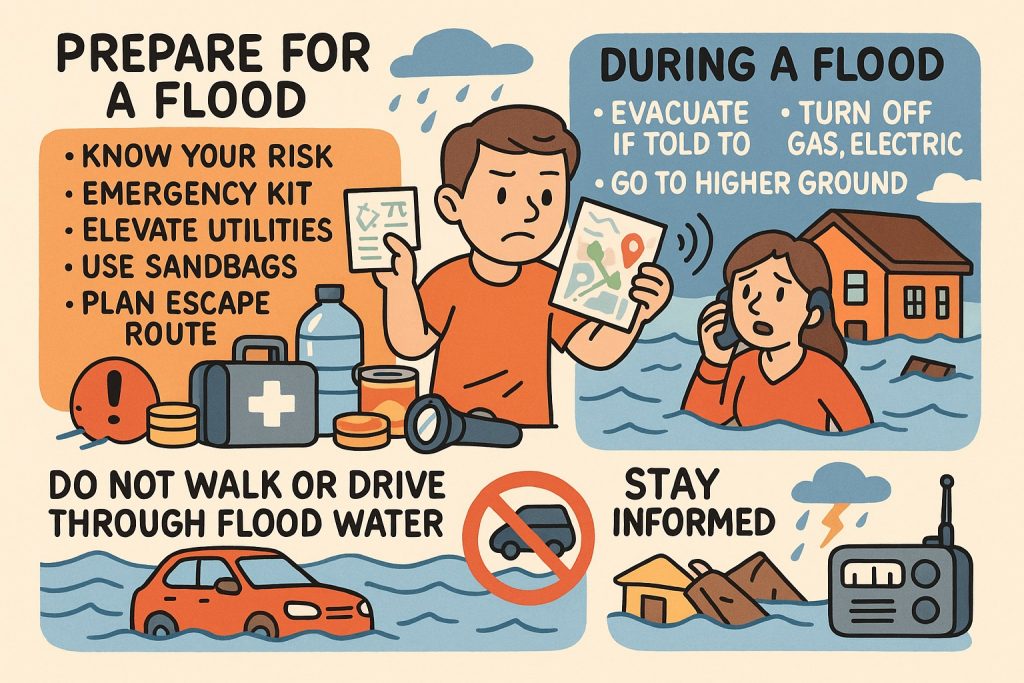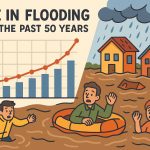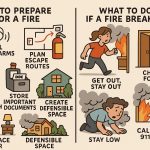Floods are among the most common and destructive natural disasters worldwide. They can occur with little warning and escalate quickly, causing property damage, health hazards, and even loss of life. Whether you live in a high-risk area or not, knowing how to prepare and how to act during a flood can make a crucial difference in your safety and survival.
How to Prepare Before a Flood
Taking preventive steps before a flood event can help minimize damage and protect your family:
- Know your flood risk: Check local maps or municipal websites to see if your area is flood-prone.
- Create an emergency kit: Include water, food for 3–5 days, a flashlight, batteries, a first aid kit, necessary medications, cash, and copies of important documents.
- Elevate appliances and electrical systems: If you live in a flood zone, raise major electrical components above potential flood levels.
- Install sump pumps and backflow valves: These help keep water out of your home.
- Keep sandbags ready: They can help redirect or absorb water around your property.
- Plan an evacuation route: Know the nearest high ground and multiple escape paths. Share this with all household members.
- Buy flood insurance: Standard home insurance usually doesn’t cover flood damage.
- Read all the instructions recommended by the Ministry of Emergency Situations.
What to Do During a Flood
Once a flood warning is issued or water begins to rise, quick and calm action is essential:
- Listen to local authorities: Follow evacuation orders immediately. Don’t wait.
- Turn off utilities: Shut off gas, electricity, and water if instructed and safe to do so.
- Move to higher ground: Avoid basements or ground-level rooms.
- Avoid walking or driving through floodwater: Just 6 inches of moving water can knock an adult off their feet, and 12 inches can sweep away a car.
- Stay connected: Use a battery-powered radio or phone to receive emergency updates.
- Bring your emergency kit if evacuating. Ensure pets are included in your plan.
If trapped in a building, go to the highest point (attic or roof) and signal for help.
After the Flood: Stay Cautious
The danger doesn’t end when the water recedes. Take care in the days that follow:
- Avoid returning until authorities declare it safe.
- Beware of structural damage to buildings, gas leaks, and contaminated water.
- Document all damage with photos for insurance purposes.
- Disinfect surfaces and discard contaminated food and water.
- Watch for mold growth in wet areas and ventilate rooms.
- Support neighbors and check on vulnerable individuals in your community.
Recovery takes time, but preparation and informed action reduce long-term impact.
Glossary
- Floodplain — A low-lying area next to a river or stream prone to flooding.
- Sump pump — A device that removes water accumulating in a basement or crawlspace.
- Backflow valve — A plumbing device that prevents sewage from backing up into the house.
- Evacuation route — A planned path to a safe location in an emergency.
- Contaminated water — Water containing harmful bacteria, chemicals, or sewage.


